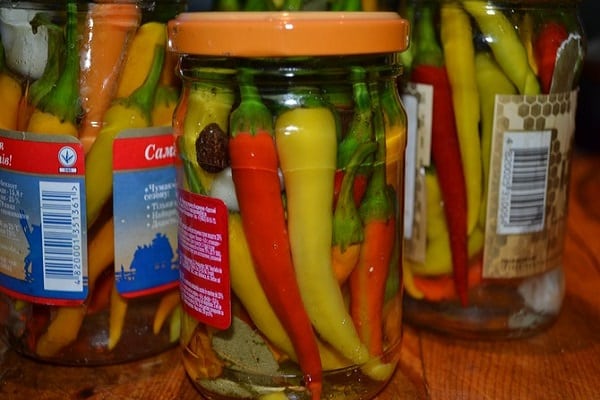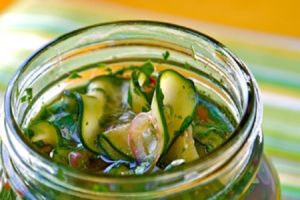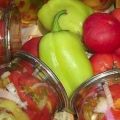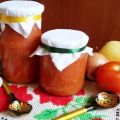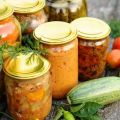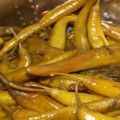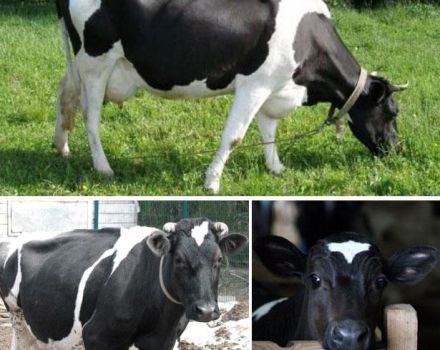TOP 10 recipes for cooking spicy pepper for the winter, with and without sterilization
After harvesting a good harvest of pepper, it is time to process it. Today, there are many options for recipes with such an ingredient, so you can choose the most preferred one. Some of them make it possible to quickly obtain pickles for which you do not need to waste time on sterilization. To save energy, it is recommended to familiarize yourself in advance with the most popular recipes for making piquant peppers for the winter.
Choosing the best varieties of pepper for blanks
Choosing the right pepper is the key to getting a delicious treat. An important role is played by the taste of the vegetable, its size and wall thickness. To prepare lecho, it is recommended to pay attention to the juicy yellow and red varieties of the plant, they look brighter and more appetizing in finished form. For such recipes, large and juicy fruits are chosen, since they win in terms of juiciness and taste, and also facilitate the process of preparing the raw materials.
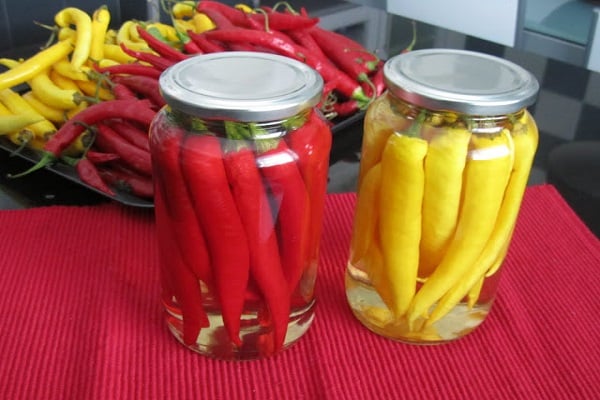
For marinades, it is recommended to take smaller vegetables - they fit more easily into jars and do not lose their appearance after heat exposure. For preservation, peppers are chosen with a wall thickness of at least 4 millimeters, in the taste of which there is a slight bitterness and sweetness prevails. The optimal weight of fruits is from 80 to 150 grams. Some of the best varieties for lecho and canning include:
- Vanguard is a large variety with fruit weight up to 450 grams; juiciness and meatiness make it ideal for making lecho and marinades; wall thickness - from 6 to 7 centimeters.
- Adept is a vegetable of universal use, fruit weight - up to 110 grams, wall thickness - from 6 to 6.5 centimeters.
- Bogdan is a late-ripening variety that gives off bright yellow peppers, weighing up to 250 grams and wall thickness from 6 to 8 centimeters.
- Ideal - peppers are red in color and weigh up to 150 grams; a feature of the variety is its sugar content.
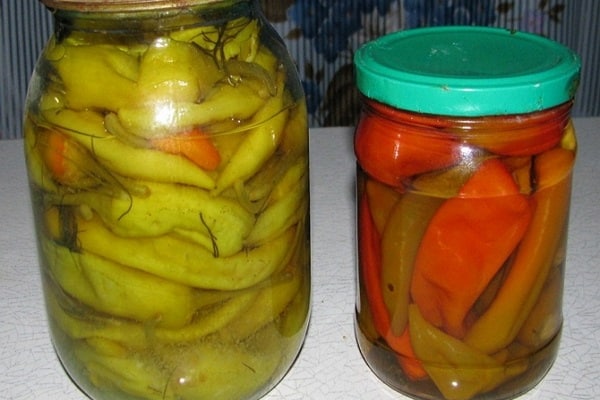
Some recipes require special varieties, but traditional varieties are not suitable. These include options for the preparation of sharp blanks, involving the use of hot or hot pepper.
We prepare the necessary ingredients
For blanks, ripe fruits are used, with an even smooth surface, without signs of rot and damage. Peppers wash thoroughly and remove excess items and debris. If necessary, cut off the damaged areas.
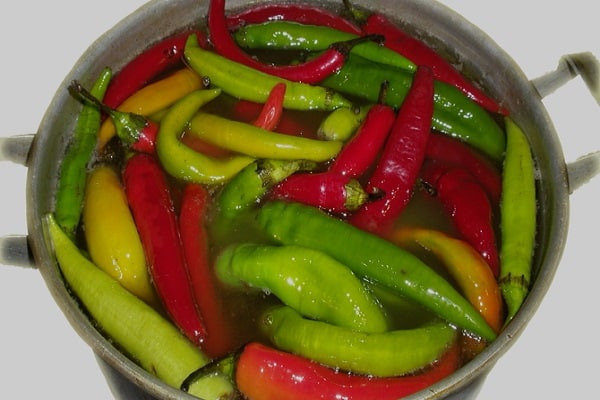
The processing method depends on the type of recipe, so different options are possible.When processing traditional peppers, the base is cut, the core and seeds are removed. For spicy recipes, use whole fruits. The following types of slicing are most often used:
- fruits with the base removed;
- lobules in the form of 2 or more parts;
- circles.
Harvest should be used immediately after harvest, as long-term storage leads to loss of appearance and quality characteristics of peppers.
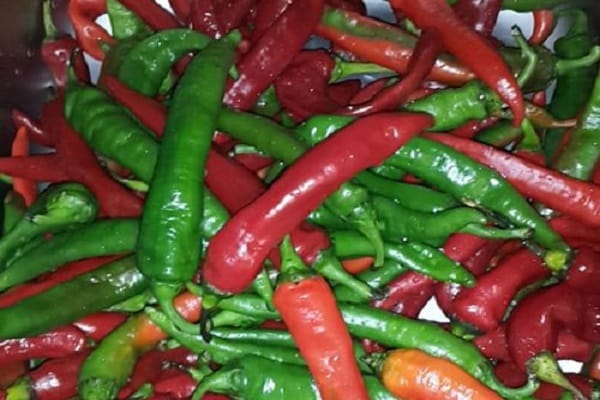
Spicy pepper cooking methods
Today there are a large number of recipes for preparing pepper for the winter. They can involve the preservation of vegetables whole or cut into pieces, a solo version or with the addition of other vegetables. Often the vegetable is stewed with squash, zucchini, carrots, tomatoes and then rolled into jars.
Regardless of the recipe chosen, a number of rules should be followed that will allow you to get a tasty treat and keep it throughout the season. The main ones include:
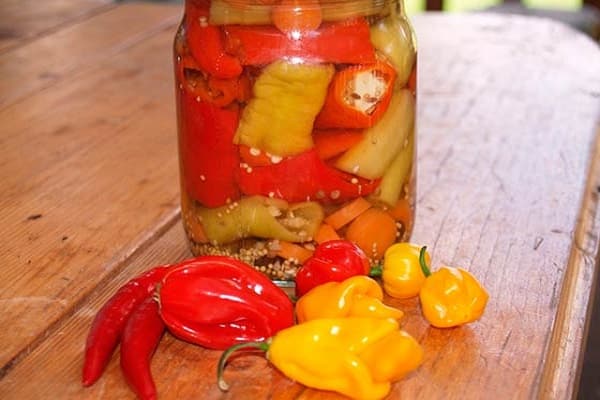
- cleanliness - not only cans are thoroughly washed, but also all kitchen utensils, including spoons and knives;
- speed - containers are sterilized immediately before placing the product in them; if after processing the lids have cooled down, then they are re-boiled for at least 10 minutes;
- quality - raw materials must be taken without flaws and signs of rot; companion vegetables must be free of cracks and damage.
The peculiarities of the recipe should be taken into account. Some of them suggest using large peppers with thick walls, others recommend choosing thin-walled fruits.
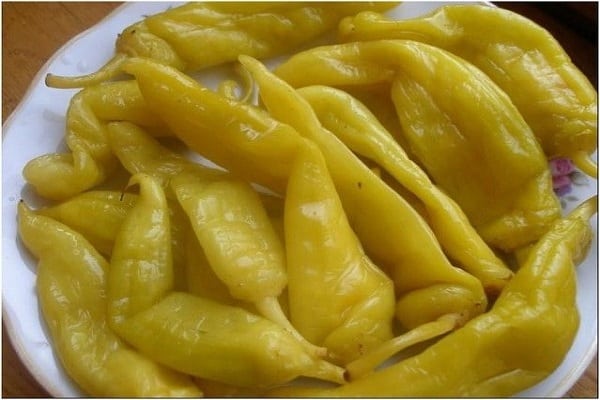
Pepper in oil
A vegetable according to this recipe is suitable as an independent dish, it is possible to use it as an ingredient in the preparation of various dishes. For preparation you will need:
- pepper - 6 kilograms;
- salt - ½ cup;
- vegetable oil - ½ cup;
- 6% vinegar - ½ cup;
- garlic - 1 head;
- greens - dill and parsley.
The vegetable is cut into equal parts, placed in a saucepan and oil is poured on top. Achieve an even distribution of salt and sugar. Boil the vegetable mixture for 20 minutes, not forgetting about constant stirring. At the end of the process, add finely chopped garlic, pour in vinegar. The mixture of vegetables is left to boil for another 5 minutes, after which it is laid out in sterile containers and covered with lids.
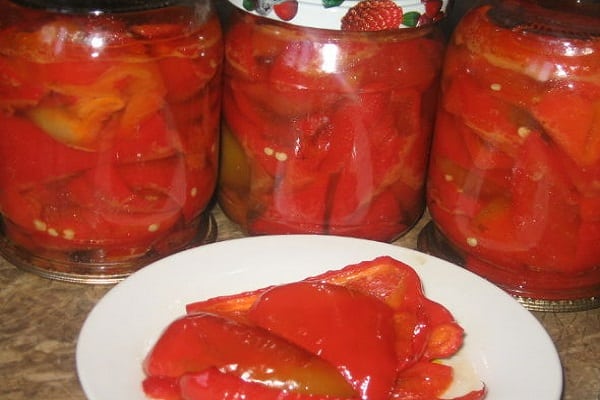
In sweet and sour marinade
This recipe is ideal for a sweet and sour snack. The honey present in the composition gives piquancy. Main ingredients:
- pepper - 2.5 kilograms;
- water - 450 milliliters;
- sunflower oil - 85 milliliters;
- sugar - 175 grams;
- salt - 1.5 tablespoons;
- vinegar 9% - 150 milliliters;
- honey - 1.5 tablespoons;
To add brightness, it is recommended to take yellow and red peppers, this combination increases the appetizing of the workpiece. Depending on the size, the vegetable is cut into 2-4 parts, the membranes are carefully removed and washed. The cubes, if desired, are cut into small cubes, cooking in the form of slices is permissible.
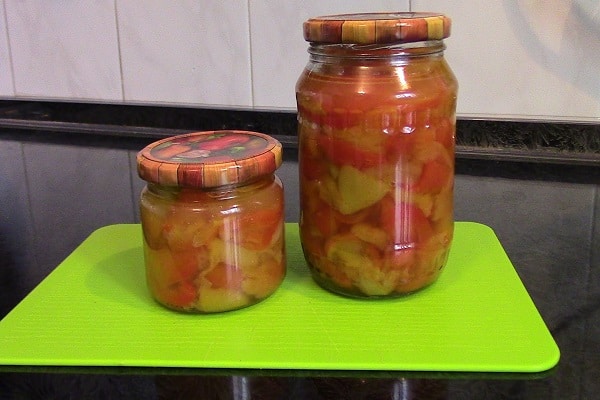
All ingredients except the pepper are mixed and the marinade is prepared. At the time of boiling, vegetables are gently lowered into the liquid, boiled for 10 minutes, until a soft structure is obtained, or 7 minutes, for a crispy snack.
It is recommended to take 0.5 liter jars, the average consumption for each of them will be 800 grams of pepper. The workpiece is laid out after thorough sterilization of the containers. The final stage of the work is the procedure of rolling up and keeping the cans upside down to cool under a shelter.
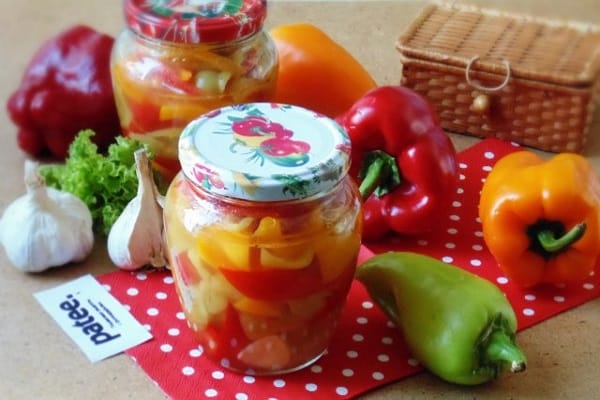
In tomato
You can marinate the vegetable whole in tomato juice. Such a blank can be used as a snack, or as a basis for stuffing with meat or vegetables. For preparation you will need:
- sweet pepper - 3 kilograms;
- tomatoes - 2 kilograms;
- salt - 1.5 teaspoon;
- vinegar - 0.5 teaspoon.
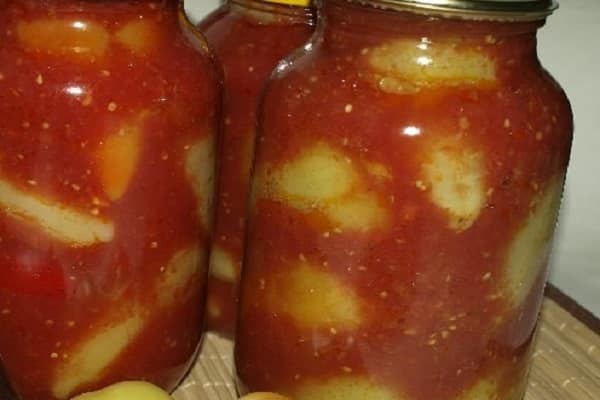
Whole tomatoes are washed, the stalk area is removed, and then passed through a meat grinder. The tomato mixture is boiled for 15 minutes and salt is added at the end. The peppers are washed, cored, placed whole in a container and boiled for 20 minutes. After that, vinegar is added, the peppers are evenly distributed over the jars, poured with marinade on top and covered with lids.
Pickled spicy
This recipe will appeal to lovers of spicy dishes. The total cooking time is 45 minutes, of which 15 minutes are required for preparing the red pepper and 30 for the cooking procedure. For 1 can of 300 milliliters, you will need:
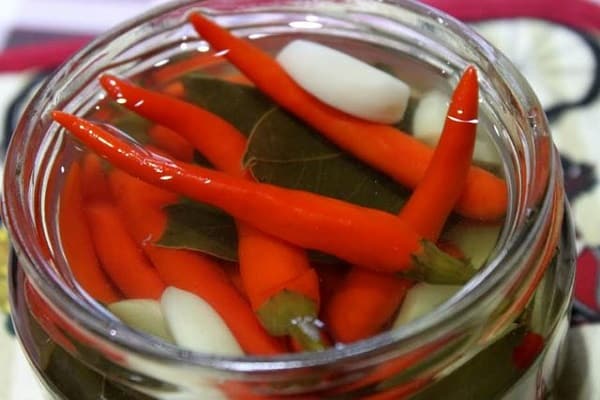
- red hot peppers - 10 pieces;
- cilantro, dill - 3 branches each;
- mint - 1 sprig;
- garlic - 1 head;
- grape vinegar - 100 milliliters;
- spices - 2 teaspoons of coriander, 6 black peas and 3 allspice, 2 cloves;
- bay leaf - 3 leaves;
- salt - 2 teaspoons;
- sugar - 1 teaspoon.
Greens are pre-processed, only leaves are taken - the trunks are not suitable for the recipe due to their coarseness. Spicy herbs and peeled garlic must be finely chopped.
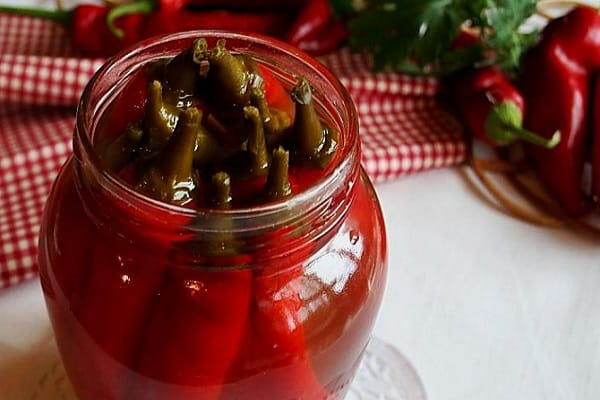
For cooking, they use completely ready-made, without green veins, peppers, they do not have to be of the correct shape. Vegetables are pierced with a thin knife blade through the stalk, otherwise air will accumulate in the cavity. Put the vegetables in a container, add water and boil under a lid for 3 minutes.
Then the fire is turned off and the vegetable is kept in a hot solution for 15 minutes.
The container is put on fire, 300 milliliters of cold water, sugar, salt, a complete list of seasonings, garlic and herbs are added. At the time of boiling, grape vinegar is introduced. Using the usual one results in a loss of aroma, so the essence is not used. For 3 minutes, keep the pan on fire, let it brew for 15 minutes and lay out the contents in pre-sterilized jars.
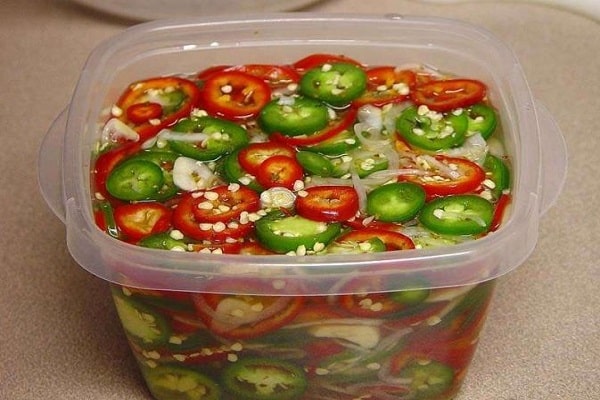
Canned, no sterilization
The canning recipe allows you to get a delicious cold snack and requires a minimum of time, since it does not involve a sterilization process. A sweet thick-walled vegetable is used for cooking. The following ingredients are required:
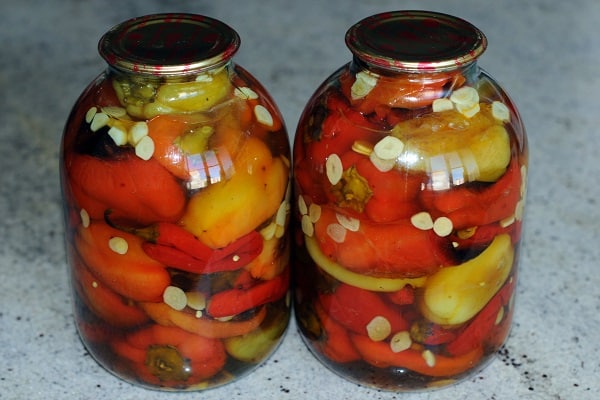
- pepper - 3 kilograms;
- sugar - 1 glass;
- salt - 1 tablespoon;
- vinegar 6% - 1 glass;
- vegetable oil - 1 glass;
- peas, bay leaf - 3 pieces each;
- water - 1 liter.
Peppers are washed, peeled from seeds, cut into slices. Water is poured into a large pan, the main ingredients are added, except for pepper, the liquid is brought to a boil. Vegetables are placed and boiled for 5 minutes, after which they are laid out in jars and rolled up as soon as possible.
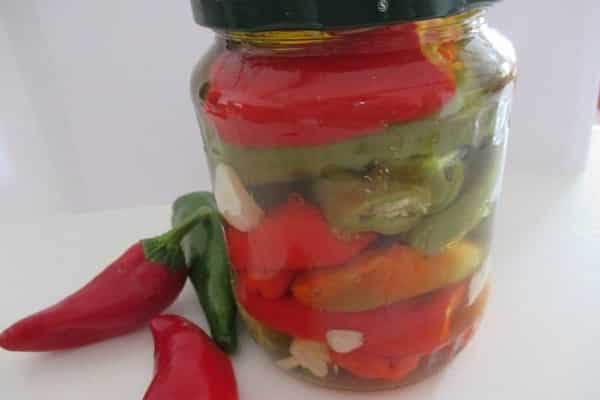
In Georgian for the winter
The spicy taste of Georgian appetizer goes well with side dishes and meat dishes. The time for preparing the blank is minimal, since it is not required to sterilize the jars. For 2 cans, 0.5 liters each, you will need:
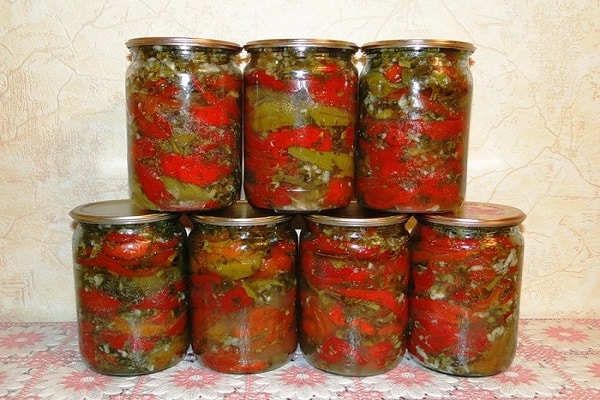
- sweet pepper - 1 kilogram;
- parsley - 1 bunch;
- sunflower oil - 5 tablespoons;
- sugar - 2 tablespoons;
- salt - 1 tablespoon;
- garlic - 1 head;
- vinegar - 2 tablespoons;
- hops-suneli - 1 tablespoon.
Put the chopped vegetables in a container, squeeze the garlic on top. Finely chopped herbs, seasonings, sugar, salt and oil are added. The mixture is stirred well and then left to stand for an hour. After that, the procedure is repeated, the container is placed on a fire for cooking for 15 minutes, and vinegar is added at the end. A thoroughly mixed snack is laid out on pre-processed cans and rolled up.
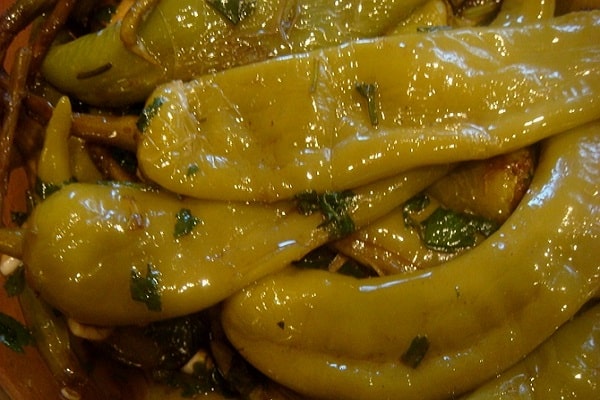
Salted hot pepper
In order to salt a vegetable according to this recipe, it is better to take green varieties. In the classic version, it is assumed that only celery is used, if desired, mint, dill or cilantro can act as an additional ingredient, which will give the workpiece a more intense taste. The recipe assumes the following ingredients:
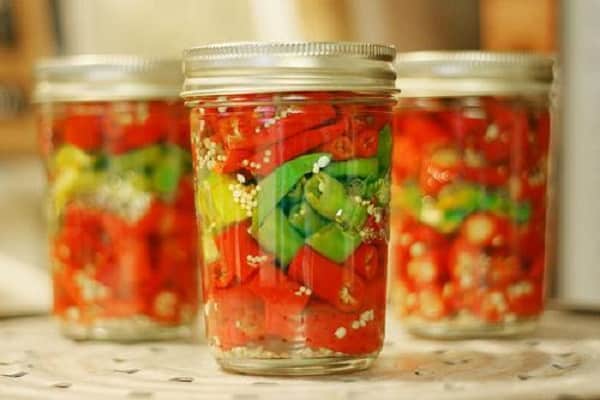
- pepper - 1 kilogram;
- water - 3 liters;
- salt - 0.25 kilograms;
- bay leaf - 7 pieces;
- garlic - 1 head;
- celery - 150 grams.
A marinade is prepared from salt, spices and water. After cooling, vegetables are poured with the solution, placed under oppression.A plate is often used as it, pressed on top with a jar of water. After 15 days, the vegetables are placed in jars, pre-sterilized. The remaining marinade is boiled and poured into containers, which must be closed from above with capron lids.
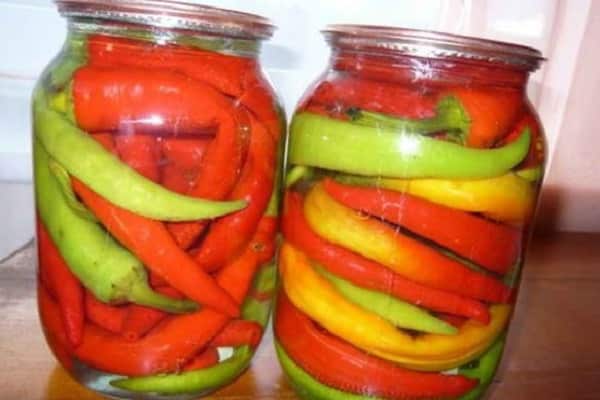
Storage rules for preparation with pepper
Billets with peppers rolled up in jars are removed to a permanent storage place only after they have completely cooled down. For this, cellars or loggias are most often used; for direct use, conservation is stored in the refrigerator.
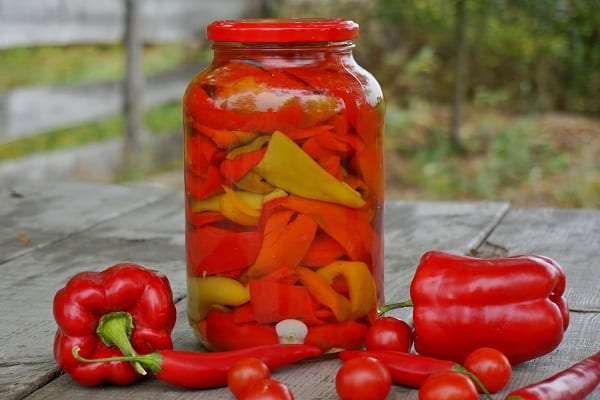
The following rules should be observed:
- the room must be dry, high humidity will lead to rust on the metal covers;
- the containers should not be exposed to sunlight, otherwise the product will start to deteriorate;
- before removing the workpiece, you should check the tightness, for which the can is turned over and the absence of leakage is monitored;
- in the event of turbidity, mold, foam or other suspicious manifestations, it is required to throw the workpiece away and not risk your own health.
The recommended shelf life for marinades is 1 year, but properly processed vegetables can last longer.
